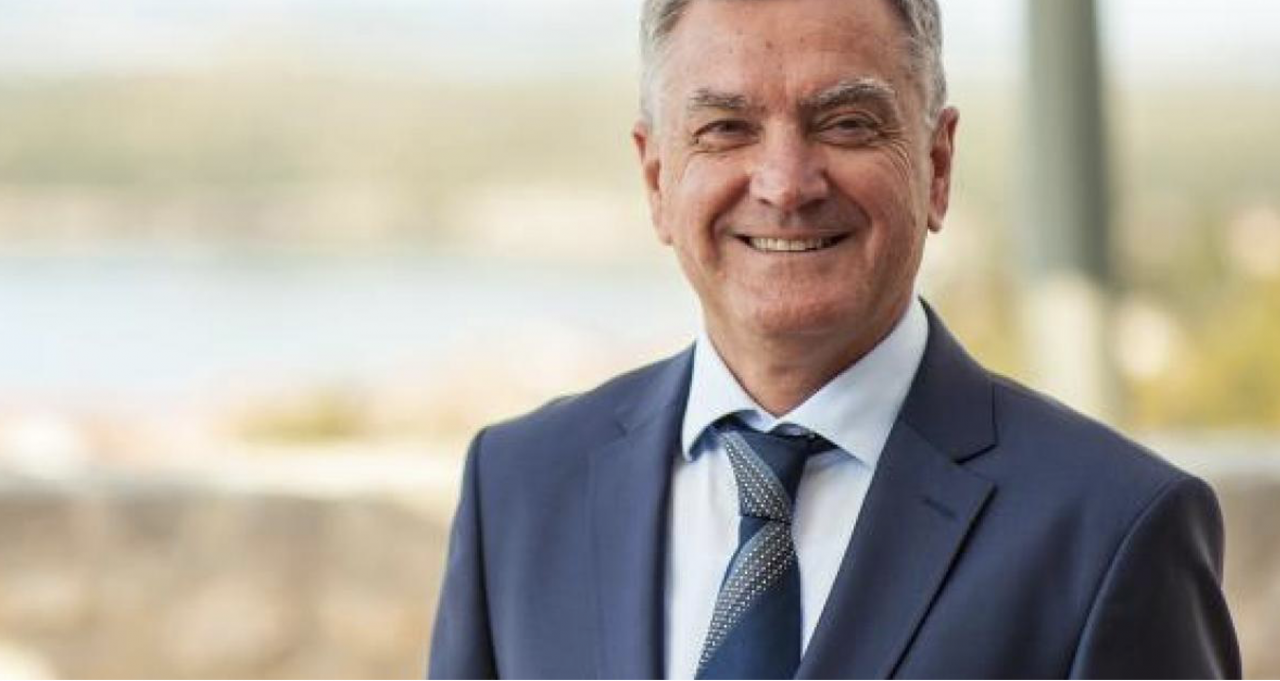
Heritage-led urban regeneration involves major urban projects, requiring significant investment and stakeholder mobilisation. In this endeavour, political backing and direction are key. The KAIRÓS interview series, conducted by the network lead expert Miguel Rivas, targets Mayors and Elected Representatives from the KAIRÓS partner cities.
Miguel Rivas: Mr. Mayor, unfortunately due to the pandemic we in KAIRÓS missed the opportunity to visit your city last year. How would you introduce Šibenik to an international audience? What positioning in Croatia are you working for?
Željko Burić: Šibenik is the oldest native Croatian city on the Adriatic, the capital and cultural, educational, administrative and economic center of the Šibenik-Knin County. Šibenik is the only city in Croatia and one of the few cities in the world with two monuments inscribed on the UNESCO list of protected cultural heritage. In the past few years, the city of Šibenik has awakened its dominance through smart and successful use of EU funds and has positioned itself as one of the Adriatic tourist pearls.
Our focus is the completion of the projects such as the arrangement of the Fortress of St. Ivan, the construction of the Coral Center in Zlarin, the Palacin student dormitory and the kindergarten in Crnica. The City of Šibenik is also working to strengthen demographic factors; we won the title of the best city for demography and education, and at the same time, Šibenik is the proud holder of the charter "City for Youth 2021-2024.". At the annual level, over 30 million kuna is invested in preschool education, and continuous work is being done on the renovation and construction of kindergartens. Our goal is to expand capacities and quality, ie to adhere to the pedagogical standard of the number of children and educators by groups.
In economic terms, we are working to strengthen our Podi Entrepreneurial Zone, but at the same time we are working intensively on a large project that will completely change the image of the city. The Batižele project for Šibenik will open a completely new perspective, and it is about an area of about 200 thousand square meters, the zone of the former Electrodes and Ferroalloys Factory (TEF). With the opening of the third land fortress of Šibenik, St. Ivan, Šibenik will get a new attraction. The most special content at the Fortress of St. Ivan will be an educational center in a unique historical environment that will position Šibenik as a center of cultural and creative industries in Croatia. Šibenik Fortress, and the recently opened House of Art Arsen, is managed by our public institution Fortress of culture Šibenik, which is recognizable not only in Croatia, but also beyond by the attractiveness of the content and programs it offers. Šibenik turns its rich history and cultural heritage into content attractive to visitors, and fortunately, we have something to show.

Miguel Rivas: Concerning your participation in KAIRÓS, you are focusing on Šibenik´s Old Town as target area. What are the main challenges and problems that you are facing in this part of the city. How are they evolving?
Željko Burić: The historical core of the city of Šibenik is our cultural heritage and greatest wealth. It is interesting to the residents, but also to the guests, so it is not surprising that it is the focus of the Kairos project. We are facing depopulation of the oldest parts of the city, a lack of urban vitality during the pre- and post-season, as well as an excessive number of guests in the season. In addition, many historic buildings lack relevant use, and revitalization of the working function is necessary, as well as the renovation of communal infrastructure. Therefore, creating a scheme of sustainable urban development of the old town is one of the ways to solve the problem, and through the Kairos project we have the opportunity to find the most effective solutions with project partners. Although it is a demanding job, because the revitalization of the old town requires many years of work and skill, the City of Šibenik is implementing several projects that try to make life easier for residents of the historic center, such as renovating facades and roofs, as well as those that provide easier access and urban living, such as the construction of an underground garage and the central square of Poljana.
Miguel Rivas: The restoration and reuse of St. Michael fortress as a breathtaking open-air auditorium and the re-configuration of Poljana square have both taken a significant impact for the Old Town´s revitalisation. Is there any other major of flagship project in the pipeline?
Željko Burić: Fortress of St. Mihovila, as well as the other three fortresses in Šibenik, are really impressive and we are always glad to hear the enthusiasm of visitors. Project "Revitalization of the Fortress of St. Mihovila" connects cultural heritage with the tourist offer, and the opening of the summer stage created conditions for the tourist valorization of cultural heritage through the organization of cultural events and organized offer on the international market. With the construction of the underground garage and the renovation of the central square of Poljana, the space was returned to the people of Šibenik, which once again became a place to meet and socialize. There are several integrated projects that are planned, which seek to influence the revival of Šibenik's historic core, as well as the expansion of the tourist offer.
For example, the restoration of double ramparts, with a modern and different approaches to a single fortification system, would create a solution not only for access to the fortress of St. Mihovil, but to all the fortresses that we want to connect into a single whole. The plan is to build a cable car that would connect the fortress of St. Michael with the fortress of St. Ivana.
Miguel Rivas: In practical terms, what do you expect from the action plan resulting from your participation in the KAIRÓS experience?
Željko Burić: The integrated action plan of the historic core of the city of Šibenik has been developed in a way that is realistic and achievable in the short term. When drafting the integrated action plan, we conducted an online survey in which we found out through a series of questions asked citizens what they think needs to be changed and how the old city center can be revitalized. Over 300 responses were received, which is sufficient proof that this topic is extremely important to the citizens. Therefore, the measures of the action plan are in line with the results of online surveys, and some of the measures will be implemented by the end of the project. Certainly, we believe that this set of measures will serve as a kind of guide and assistance in the efforts to revive the old city center.
Miguel Rivas: Croatia joined the EU in 2013. Since then, Šibenik has been very active in URBACT, joining several URBACT networks. What do you most appreciate from the Programme?
Željko Burić: The City of Šibenik was a partner in a total of four projects funded by the URBACT program, we participated in action networks and transfer networks. What is most important to us at URBACT is precisely the goal of the program related to the exchange of knowledge and capacity building of European cities that develop or implement integrated strategies and action plans for sustainable urban development. Transferring good practices and finding ways to solve problems gives us opportunities to progress and contribute to the development of the local community through cooperation with other European cities.

